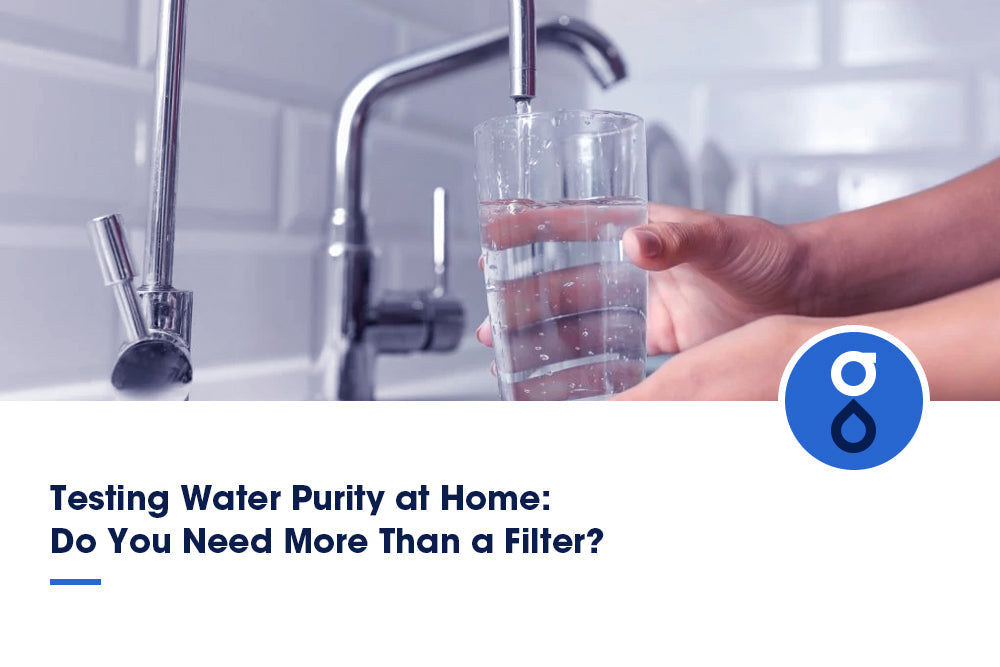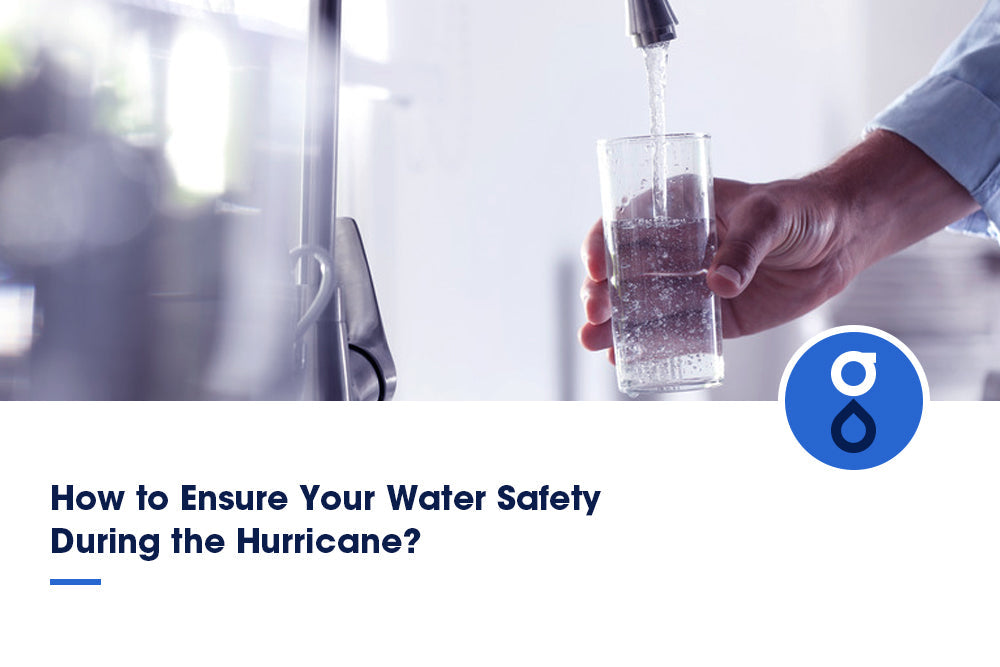Table of Contents:
The environmental impact of PFAS in water systems
Health risks associated with high PFAS levels
Factors affecting PFAS concentration measurements in water systems
Methods for testing PFAS contamination in water systems
Regulatory standards for PFAS levels in drinking water
Strategies for monitoring and managing PFAS in water systems
FAQs
Conclusion
Are you aware of the potential dangers lurking in your water systems? It's time to understand the significance of monitoring PFAS levels. These harmful chemicals have a detrimental impact on the environment and pose serious health risks. This article will explore the methods for testing PFAS contamination, regulatory standards for safe drinking water, and strategies for managing this problem. Take your time - learn why monitoring PFAS levels is crucial for the well-being of your water systems.
The environmental impact of PFAS in water systems

PFAS enter the environment through industrial discharges and leach from products that contain them during use and disposal. These chemicals do not break down easily and have been found in many water systems globally:
- Municipal water supplies - PFAS originating from industrial effluent and landfills can contaminate source water for community water systems. Treatment may not always remove them adequately.
- Private wells - PFAS from nearby military sites, landfills, farms, or other sources can leach into groundwater. Wells drawing from contaminated aquifers will have higher PFAS.
- Lakes, rivers, and streams - Direct discharge of municipal and industrial wastewater containing PFAS can pollute surface waters. PFAS may also enter through urban runoff.
- Oceans - PFAS have been detected in marine water samples worldwide, indicating their spread through rivers and atmospheric fallout.
- Rain and snow - PFAS present in the air get scavenged by precipitation. Studies have reported high PFAS levels in rainwater.
Drinking water is considered one of the major routes of PFAS exposure for humans. Water contamination is difficult and expensive to clean up once it occurs.
Health risks associated with high PFAS levels

A number of health problems have been potentially associated with exposure to certain PFAS compounds:
- Increased LDL or “bad” cholesterol levels - Can cause a higher risk of heart disease.
- Suppressed immune system - Reduced antibody production lowers vaccine efficacy.
- Developmental effects - Delayed growth and motor skills in children.
- Cancer - Increased incidence of kidney, testicular, and thyroid cancers. Some studies have revealed the connection between PFAS and cancers.
- Liver damage - Elevated liver enzymes and tissue damage observed.
- Thyroid disease - Changes in hormone levels and gland function.
The exact health risks posed depend on the specific PFAS, exposure levels and duration, along with individual risk factors like age and health status. While more research is still required, adhering to water quality standards is prudent.
Factors affecting PFAS concentration measurements in water systems
Sample collection methods
To ensure accurate results, it's crucial to use proper sample collection methods for monitoring PFAS levels in water systems. Here are some key factors to consider when it comes to sample collection:
Sampling techniques:
- Selecting appropriate sampling locations to ensure representative samples.
- Collecting samples at different depths to capture any variations in PFAS concentrations.
Preservation methods:
- Using appropriate containers and preservation techniques to prevent sample degradation.
- Adding preservatives, such as acid, to maintain sample integrity during transportation and storage.
Equipment requirements:
- Utilizing clean and specialized equipment to avoid contamination.
- Ensuring proper calibration and maintenance of instruments used for sample collection.
Storage conditions
For accurate results, it's crucial to store your collected samples in appropriate conditions to maintain their integrity. Temperature control is essential in preserving the quality of your samples. It is recommended to store them at specific temperatures to prevent degradation and maintain their chemical stability.
Choosing the right container type is also important. Glass containers are commonly used because they are non-reactive and do not contaminate the samples. Plastic containers, on the other hand, may leach chemicals into the samples, affecting the accuracy of the results.
Additionally, it is important to keep track of the shelf life of your samples. Over time, samples may degrade, leading to inaccurate results. By following proper storage conditions and conducting regular quality control checks, you can ensure the accuracy and reliability of your sample analysis
Sample storage conditions
By maintaining proper storage conditions, you can ensure the integrity and reliability of your collected samples. Handling the samples with care is crucial to avoid contamination or degradation. Consider the following guidelines for sample storage:
Sample handling:
- Always wear gloves and use clean tools to prevent cross-contamination.
- Label each sample container accurately to avoid confusion and mix-ups.
Temperature control:
- Store samples at the recommended temperature to prevent degradation.
- Use refrigeration or freezers for temperature-sensitive samples.
Quality control:
- Regularly monitor and record storage conditions to ensure sample stability.
- Implement strict quality control measures to maintain data accuracy.
Preservation techniques:
- Use appropriate preservation techniques, such as adding preservatives or freezing samples.
- Follow established protocols for sample preservation to minimize degradation.
Standardized protocols and guidelines
Follow standardized protocols and guidelines to ensure consistency and accuracy in your sample storage and handling practices. These standardized guidelines provide a framework for monitoring techniques, data analysis, quality control, and reporting procedures.
Adhering to these guidelines ensures that your samples are stored and handled consistently and reliably, minimizing the risk of contamination or degradation. This will ultimately result in more accurate and reliable data analysis, allowing you to make informed decisions based on the results.
Methods for testing PFAS contamination in water systems
Sampling techniques for PFAS testing in water systems
To properly sample for PFAS contamination in your water system, you'll need to use specific techniques recommended by experts. The first technique is grab sampling, collecting a single water sample at a particular location and time. This method is quick and easy, but it may not provide a comprehensive picture of PFAS levels in your system. Another technique is composite sampling, where you collect multiple samples over a specific period and mix them. This method gives a more accurate representation of PFAS levels over time. Additionally, experts recommend using low-density polyethylene (LDPE) bottles for sample collection, as PFAS can easily adhere to other types of containers.
Analytical methods for detecting PFAS contamination in water

One commonly used method is liquid chromatography-tandem mass spectrometry (LC-MS/MS). This technique involves separating the PFAS compounds from the water sample and then analyzing them using mass spectrometry. LC-MS/MS is highly sensitive and can detect low levels of PFAS in water. Another method is high-performance liquid chromatography (HPLC) combined with fluorescence detection. This technique uses a fluorescent dye that binds specifically to PFAS compounds, allowing their detection. Gas chromatography-mass spectrometry (GC-MS) is also used to analyze PFAS in water. It involves vaporizing the PFAS compounds and then separating and identifying them using mass spectrometry.
Quality control measures for accurate PFAS testing results
Implementing quality control measures is an important aspect of ensuring accurate PFAS testing results. These measures are crucial for maintaining the reliability and credibility of the testing process.
One way to achieve this is by regularly calibrating the testing equipment to ensure accurate measurements. Additionally, it is essential to establish standard operating procedures (SOPs) that outline the steps to be followed during the testing process. These SOPs should include details on sample collection, handling, and analysis methods. Furthermore, it is important to conduct regular quality assurance and quality control (QA/QC) checks to verify the accuracy and precision of the testing results. This can involve running duplicate samples, analyzing certified reference materials, and participating in proficiency testing programs.
Regulatory standards for PFAS levels in drinking water
In 2016, the EPA established a non-enforceable health advisory limit of 70 parts per trillion (ppt) for two common PFAS compounds - PFOA and PFOS. Some states have since set more stringent guidelines from 10 ppt to a few dozen ppt for certain PFAS chemicals, especially in groundwater.
The EPA has a PFAS action plan to establish national regulatory standards under the Safe Drinking Water Act. More toxicological studies are underway to determine appropriate PFAS limits to protect human health. The current guidelines may be tightened further as new evidence emerges.
The European Union and Canada have implemented drinking water regulatory limits between 5 to 30 ppt for select PFAS like PFOA, PFOS, PFNA, and PFHxS. Enforcement of appropriate science-based standards is important to control PFAS exposure through water.
Strategies for monitoring and managing PFAS in water systems

Water municipalities, suppliers, and treatment facilities should adopt proactive strategies to monitor and minimize PFAS in their systems:
- Install granular activated carbon filters, ion exchange systems, and other technologies to remove PFAS during treatment.
- Implement regular PFAS testing at critical points like influent, effluent, and finished water per EPA Method 537.1 guidelines.
- Establish a PFAS monitoring program to identify new contamination sources early. Analyze for short and long-chain PFAS.
- Evaluate alternate water sources or blending if PFAS levels are high in current source waters.
- Adopt pretreatment standards for industrial PFAS discharge into sewers and wastewater treatment plants.
- Follow best practices on fire training facilities and fighting to reduce PFAS runoff into surface or groundwater.
- Educate local communities on PFAS health risks and precautions through water quality reports.
Proper PFAS assessment and control ensures public water systems provide safe drinking water with minimal exposure risks.
FAQs
How do PFAS levels in water systems vary across different regions?
PFAS levels in water systems vary across different regions due to various factors. These factors include industrial activities, proximity to contamination sources, and water treatment processes.
Can PFAS be effectively removed from water through treatment processes?
Various removal techniques, such as activated carbon filtration and ion exchange, have been proven to be efficient in reducing PFAS levels.
Conclusion
So, there you have it! Monitoring PFAS levels in water systems is crucial for ensuring the environment's safety and public health. By understanding the environmental impact and health risks associated with high PFAS levels and implementing effective testing methods and regulatory standards, we can take proactive steps in managing and reducing PFAS contamination. We must continue to monitor and address this issue to protect our water systems and the well-being of future generations.


















